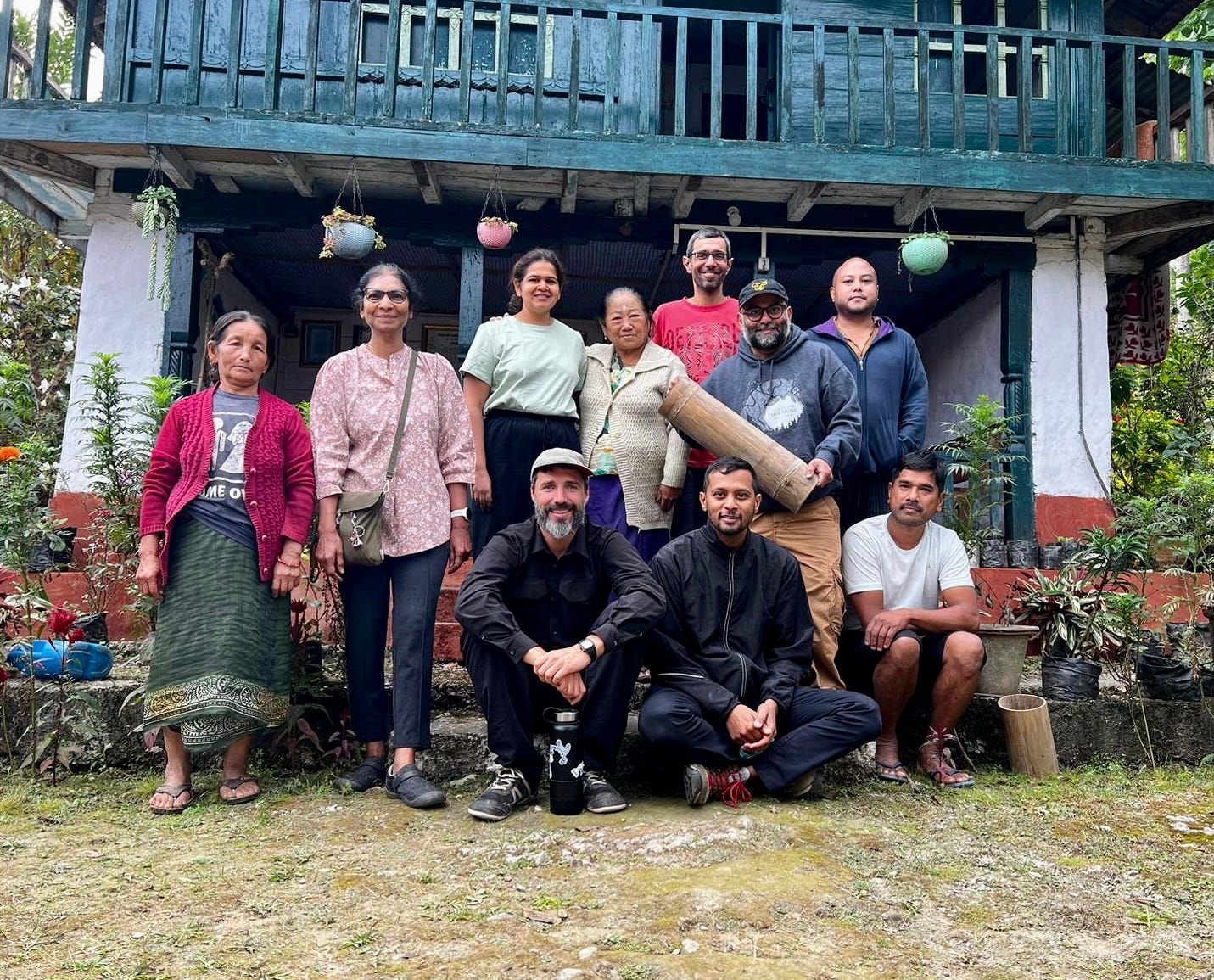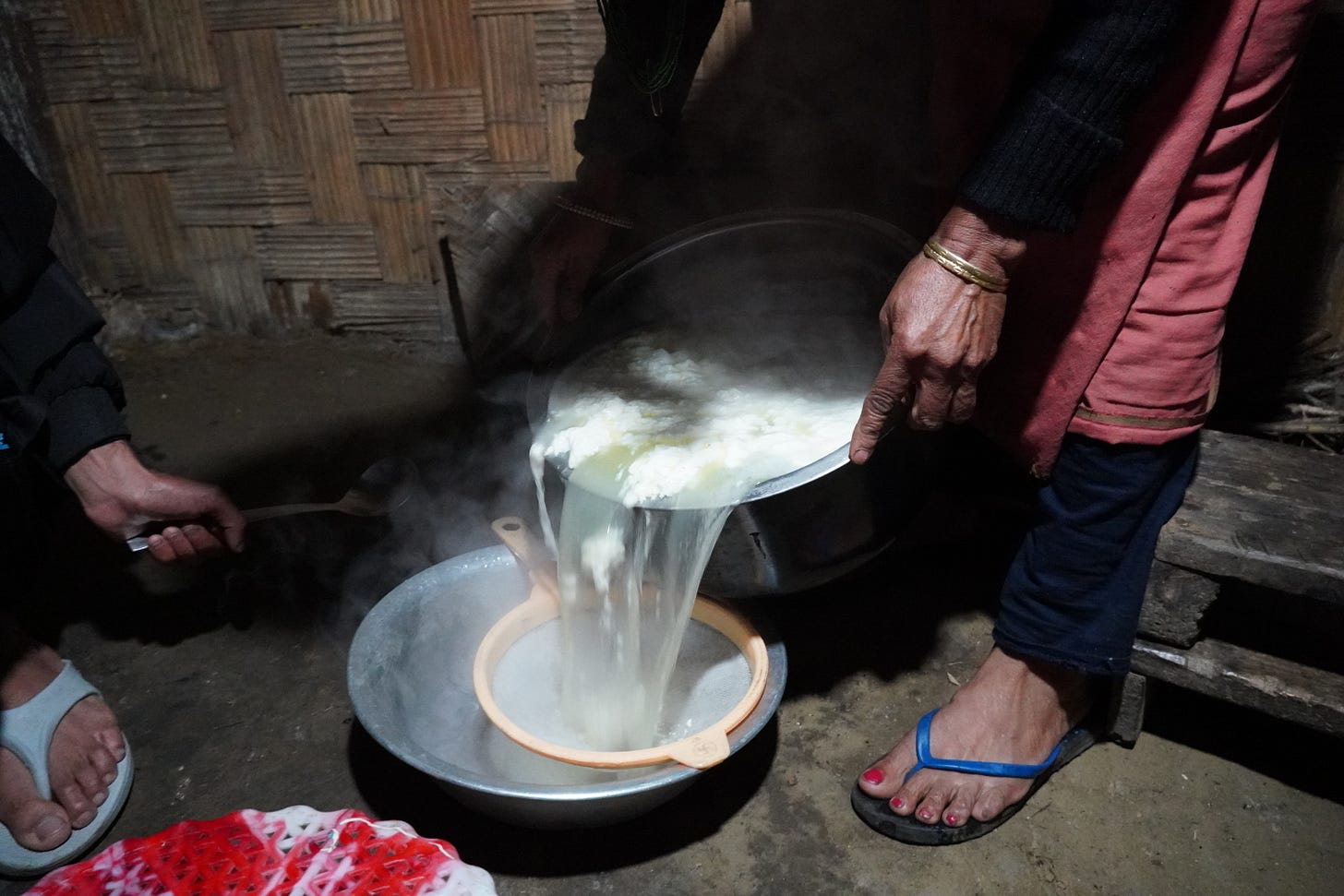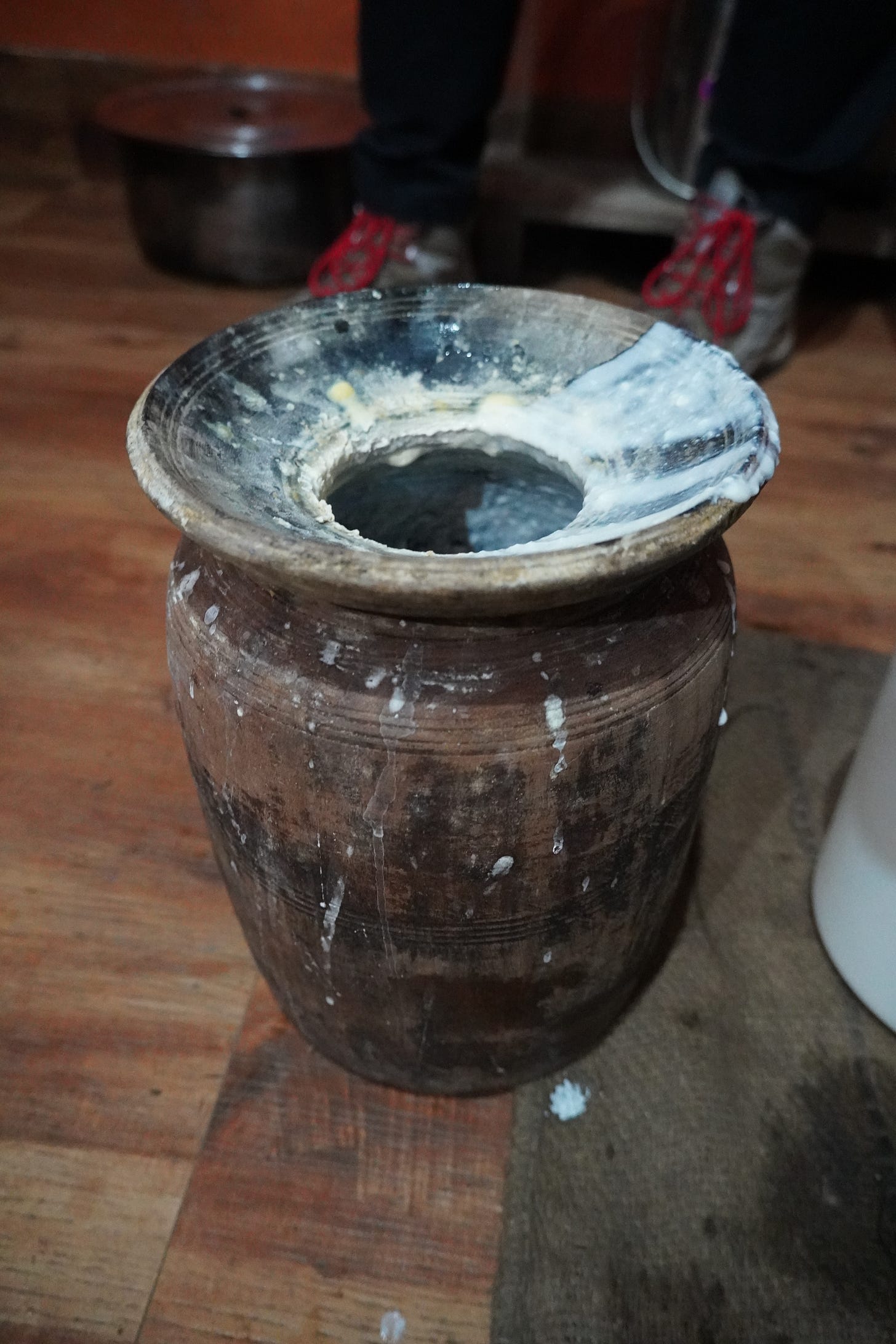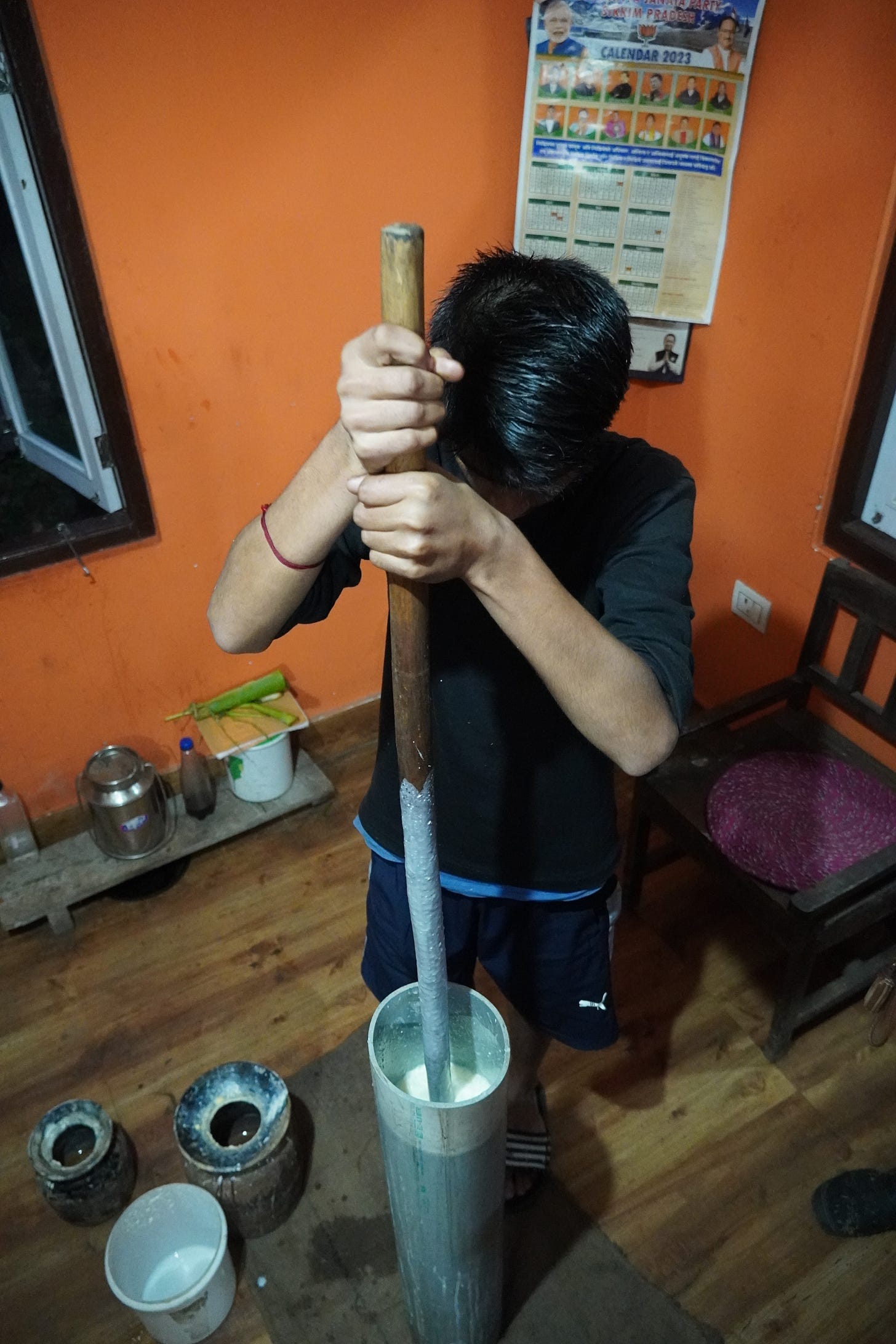Sikkim, India: Making butter from yogurt, and a cheese called Churpi.
Exploring the milk fermentation traditions of the Eastern Himalaya.
Immediately after arriving in India, I headed up to Sikkim, to join a 9 day tour with an outfit called Kipepeo. We are looking at the cultural and culinary worlds of various communities in the region, with a focus on fermented foods and beverages. This piece will be a quick and rough description of a cheese called Soft Churrpi, that is famous across the Eastern Himalaya in Nepal, Tibet, Bhutan, and adjacent regions of India, such as Sikkim. It is an acid and heat coagulated cheese, so no rennet is used. Churrpi goes hand in hand with the two most popular dairy foods of India: Yogurt and Butter. Yogurt is made into butter, then the remaining liquid (buttermilk) is made into soft Churpi.

Globally, there are two major approaches to making butter. The first is to remove the cream from milk through hand skimming or mechanical separation. Skimming is common with cows milk, which has a larger milk fat globule (MFG) that readily rises, forming a cream layer on top of milk. This cream is “churned”, which breaks open the MFG, releasing the fat in greasy fragments, which are gathered together as butter. The resulting liquid is buttermilk, which has various culinary applications, but is often considered a “byproduct”.
The other approach is to turn whole milk into yogurt - generally through a mainly thermophillic fermentation - and churn this yogurt into butter. It appears this was historically done in a wide band stretching from India to Turkey, and it still exists in pockets. I have seen it in a few regions with surviving Turkish influence in the Balkans and Caucausus. This technique may be an approach associated with hotter climates, where milk easily undergoes thermophillic fermentation, and is also frequently boiled to facilitate yogurt making. The cream to butter approach may be more of cold climate thing, where cream can be stored with just light fermentation. This is a new concept for me, introduced by my friend, Indian-Canadian chef and cheesemaker Addie Raghavan. This concept needs further investigation, but I am happy to share it here so you can be a part of the process of discovery.
It’s this yogurt butter approach that I am observing in Sikkim. The technique was demonstrated at a small, home-level farm next door to Daragaon Retreat, in Darap. The cows are milked twice a day, and the milk immediately boiled. It is then made into yogurt, by pouring it into the wood vessels that I describe in the video. When we arrived, they poured the yogurt from the last 2 days into a plunger churn made from PVC. I have seen the same design made out of bamboo, but in this case a material that is easier to clean has been substituted. The plunger is still made from wood, and has a design similar to those of many cultures. The bottom plate fits loosely inside, and has two V notches to allow the milk to pass, but applies enough pressure to cause the rupture of the MFG.
Keep reading with a 7-day free trial
Subscribe to Milk Trekker to keep reading this post and get 7 days of free access to the full post archives.







